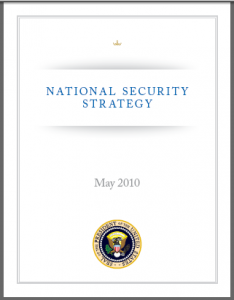© Kapok Tree Diplomacy. April 2012. All rights reserved. Jeff Dwiggins
FREE CONTENT
 I think a good starting place to assess executive department policy integration begins with the strategy formulation phase for what types of policies the executive is going to endorse and promote. For the purposes of this post, by executive I mean ‘the President of the United States.’ Ultimately the strategic planning system identifies the ends, ways and means of a sound and compelling strategy that “integrates the processes and documents” of the people working under him and the “people and organizations with which he directly coordinates” (Meinhart 2006, 304, 311). As a scholar, I would want to know how the executive came up with the policy, what the goals were, and what the strategy was to advance the policy.
I think a good starting place to assess executive department policy integration begins with the strategy formulation phase for what types of policies the executive is going to endorse and promote. For the purposes of this post, by executive I mean ‘the President of the United States.’ Ultimately the strategic planning system identifies the ends, ways and means of a sound and compelling strategy that “integrates the processes and documents” of the people working under him and the “people and organizations with which he directly coordinates” (Meinhart 2006, 304, 311). As a scholar, I would want to know how the executive came up with the policy, what the goals were, and what the strategy was to advance the policy.
Yarger adds that the overarching strategy must be proactive and anticipatory, resource-balanced, driven by political purposes, hierarchical, comprehensive and derived from “thorough analysis and knowledge of the strategic situation and environment” (2006, 107-111). He describes the ends, ways and means as national objectives, strategic concepts or courses of action and resources (of national power) respectively, and advocates that good policy must minimize risk for effective integration and execution (111). Read more







Blind Man’s Bluff: Kazakhstan’s Mirage of Compliance with International Obligations to Uphold the Freedom of Expression and Freedom of Assembly and Association
“Blind Man’s Bluff: Kazakhstan’s Mirage of Compliance with International Obligations to Uphold the Freedom of Expression and Freedom of Assembly and Association” by Kapok Tree Diplomacy
© Kapok Tree Diplomacy. May 2011. All rights reserved. Jeff Dwiggins.
FREE PREVIEW
Section One – The Right to Freedom of Expression
ICCPR Principles and Obligations. The Universal Declaration of Human Rights (UDHR), though not legally binding, declares that “Everyone has the right to freedom of opinion and expression … and to seek, receive and impart information and ideas through any media and regardless of frontiers” (Art. 19).The ICCPR, which Kazakhstan ratified in 2006 (UN Treaty Collection), expands upon this definition and binds state parties “in accordance with its terms and with international law” (Steiner, Alston and Goodman (SAG) 152). Treaty obligations are to be governed by the Vienna Convention’s Article 26 fundamental principle of pacta sunt servanda which states, “[e]very treaty in force is binding upon the parties to it and must be performed by them in good faith” (Dunoff, Ratner & Wippman (DRW) 58). Article 19 of the ICCPR declares: Read more
Share this:
Like this: